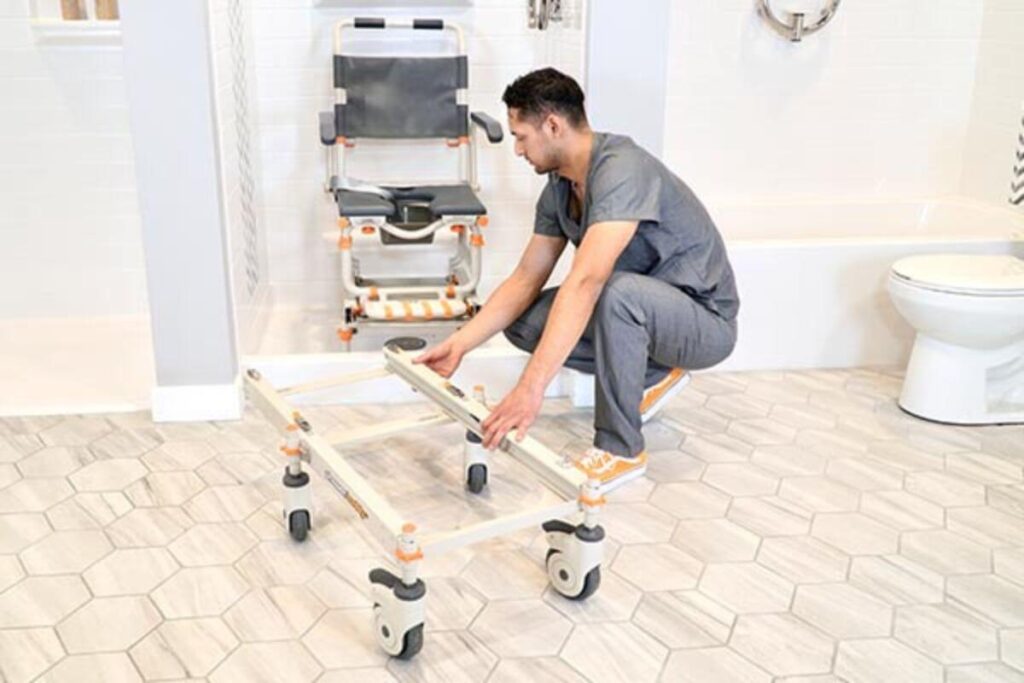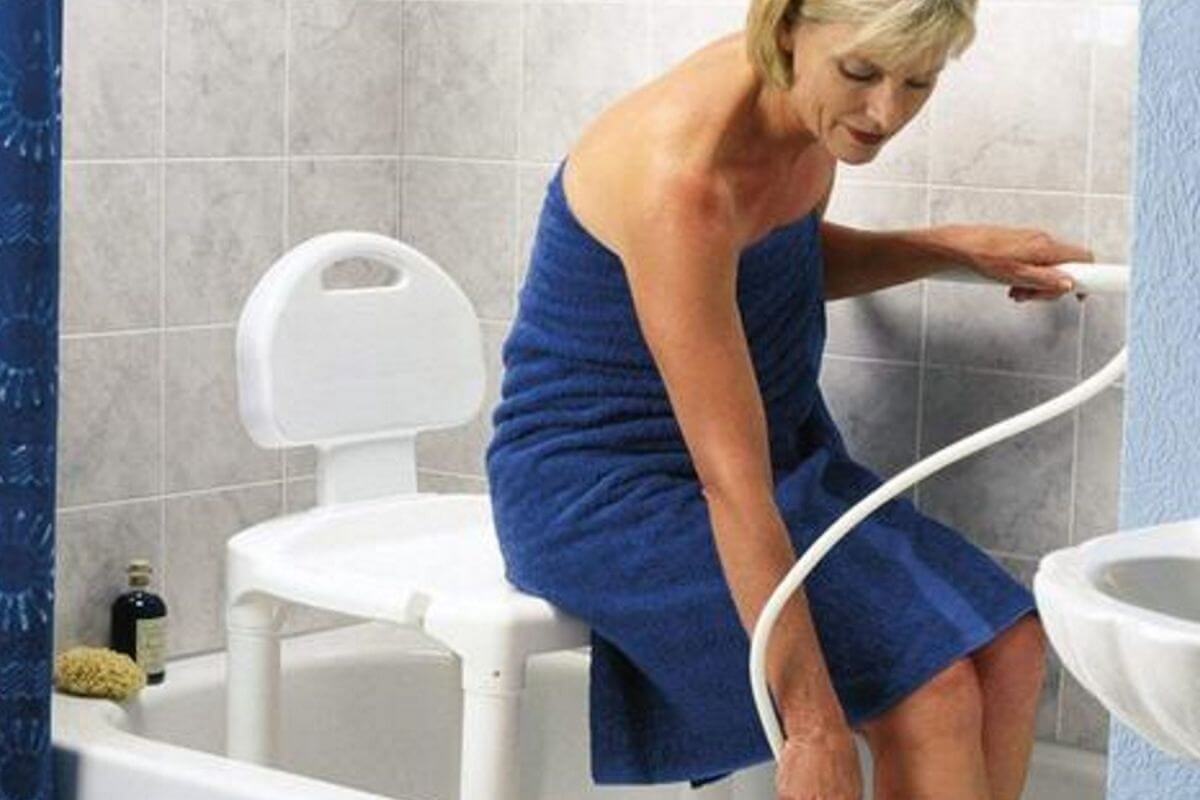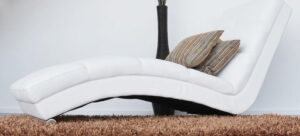Bathing is a fundamental aspect of personal care, and when someone requires the use of a shower chair, providing assistance with sensitivity and attention to their comfort becomes paramount. This comprehensive guide offers step-by-step insights into the process, emphasizing safety, dignity, and the well-being of the individual.
I. Understanding the Importance of a Shower Chair
Bathing is a routine activity often taken for granted, but for individuals with limited mobility or certain health conditions, it can pose significant challenges. In these cases, a shower chair becomes a valuable aid, playing a crucial role in ensuring not only personal hygiene but also fostering independence and safety. Let’s delve into the reasons why a shower chair is an essential tool for many individuals.

I. Enhancing Accessibility
A. Independence in Personal Care
- For individuals with mobility issues, a shower chair provides the means to engage in personal care independently. It restores a sense of control and autonomy, contributing to emotional well-being.
B. Reduction of Physical Strain
- The act of standing during a shower can be physically demanding, especially for those with limited strength or endurance. A shower chair alleviates this strain, allowing for a more comfortable and less tiring bathing experience.
II. Preventing Accidents and Ensuring Safety
A. Stability and Support
- The primary function of a shower chair is to offer stability and support. This is particularly crucial in a wet and slippery environment where the risk of slips and falls is heightened.
B. Minimization of Fall-Related Injuries
- By providing a secure seating option, a shower chair significantly reduces the risk of fall-related injuries, which can have severe consequences for individuals with limited mobility.
III. Promoting Comfort During Bathing
A. Extended Bathing Periods
- For those who may require more time during their bathing routine, a shower chair offers a comfortable seating arrangement, allowing for extended periods without discomfort or fatigue.
B. Reducing Anxiety
- The anxiety associated with fear of falling during a shower can be a significant barrier to personal care. A shower chair provides reassurance, contributing to a more relaxed and enjoyable bathing experience.
IV. Adapting to Diverse Mobility Levels
A. Customization for Individual Needs
- Shower chairs come in various designs, including models with backrests, armrests, and adjustable heights. This diversity allows for customization to meet the specific needs of individuals with varying levels of mobility.
B. Ease of Transfer
- Many shower chairs are designed to facilitate easy transfers from wheelchairs or mobility aids, ensuring a seamless transition into the showering environment.
V. Facilitating Caregiver Assistance
A. Assisting with Personal Care
- For individuals who require assistance with bathing, a shower chair provides a stable platform for caregivers to offer support without compromising their own safety.
B. Reducing Physical Strain on Caregivers
- Caregivers can perform their duties more effectively and with less physical strain when the person being cared for is securely seated on a shower chair.
VI. Encouraging Regular Personal Hygiene Practices
A. Preserving Dignity
- The provision of a shower chair contributes to the preservation of dignity, allowing individuals to maintain personal hygiene independently or with minimal assistance.
B. Eliminating Barriers to Bathing
- For those who may have previously faced barriers to bathing, a shower chair removes these obstacles, promoting regular personal hygiene practices and overall well-being.
VII. A Key to Empowerment and Well-Being
In conclusion, a shower chair is not merely a piece of assistive equipment; it is a key to empowerment, safety, and well-being. By understanding the importance of a shower chair, we recognize its role in fostering independence, ensuring safety, and promoting the fundamental right to personal hygiene for individuals with diverse mobility needs.
May the presence of a shower chair in the bathroom symbolize not just accessibility, but a gateway to dignity, comfort, and a sense of self-determination for those who benefit from its invaluable assistance.
II. Preparing for the Bath
A. Gathering Supplies
- Assemble all necessary supplies, including soap, shampoo, towels, and any specialized bathing products. Confirm the shower chair is stable and in good condition.
B. Adjusting Water Temperature
- Ensure the water temperature is comfortable and safe. Test it beforehand to prevent discomfort or the risk of burns.
III. Ensuring Safety Measures
A. Non-Slip Surfaces
- Place non-slip mats both inside and outside the shower to prevent accidents. Confirm the stability of the shower chair on the shower floor.
B. Grab Bars
- Install grab bars if available to provide additional support for the individual getting in and out of the shower chair.
IV. Assisting with Transfers
A. Gentle Transitions
- Help the individual transfer from their wheelchair or mobility aid to the shower chair with gentle movements. Ensure they feel secure throughout the process.
B. Use of Transfer Belts
- If necessary, use a transfer belt to assist with the transfer. This provides additional support and reduces the risk of falls.
V. Bathing Process: Step-by-Step
A. Wetting the Body
- Begin by wetting the individual’s body using a handheld showerhead or a cup. Gradually acclimate them to the water temperature.
B. Applying Soap and Shampoo
- Apply soap and shampoo gently, using a soft sponge or cloth. Pay attention to areas that may require more care, such as sensitive skin or specific medical conditions.
C. Rinsing Thoroughly
- Ensure all soap and shampoo are thoroughly rinsed off to prevent skin irritation. A handheld showerhead offers better control during rinsing.
D. Drying Process
- Towel-dry the individual carefully, paying attention to skin folds and ensuring they are comfortable and dry.
VI. Maintaining Privacy and Dignity
A. Communication
- Maintain open communication throughout the process. Respect the individual’s preferences and ensure they feel involved in decisions about their care.
B. Modesty Measures
- Use towels strategically to maintain modesty and dignity. Consider providing a bathrobe for additional comfort during transfers.
VII. Post-Bath Care
A. Hydration
- Offer water or hydrating beverages to prevent dehydration, especially if the bath is lengthy.
B. Ensuring Comfort
- Ensure the individual is comfortable post-bath, with clean and dry clothing. Assist with any additional grooming or personal care needs.
VIII. Conclusion: Nurturing Well-Being Through Care
In conclusion, bathing someone in a shower chair is a delicate and essential aspect of caregiving. By prioritizing safety, communication, and maintaining dignity throughout the process, caregivers contribute not only to physical well-being but also to the emotional and mental comfort of the individual.
So, as you embark on this journey of compassionate care, may each moment in the shower chair be a testament to respect, comfort, and the nurturing of the overall well-being of those entrusted to your care.
IX. Encouraging Independence
A. Adaptive Tools
- Introduce adaptive tools, such as long-handled sponges or shower brushes, to empower the individual with more independence during the bathing process.
B. Step-by-Step Guidance
- Provide step-by-step guidance on using shower controls, if applicable, enabling them to have greater control over their bathing experience.
X. Personalizing the Environment
A. Preferred Products
- Use the individual’s preferred soap, shampoo, and other bathing products to create a familiar and personalized environment.
B. Adjusting Lighting
- Consider the lighting in the bathroom. Soft, adjustable lighting can contribute to a more comfortable and calming atmosphere.
XI. Regular Monitoring and Adaptations
A. Regular Assessment
- Regularly assess the individual’s needs and adapt the bathing routine accordingly. Health conditions, mobility, and preferences may change over time.
B. Feedback and Communication
- Encourage open communication to receive feedback on the bathing experience. This ensures continuous improvement and tailoring of care to individual preferences.
XII. Special Considerations for Different Mobility Levels
A. Limited Mobility
- For those with limited mobility, ensure the shower chair is appropriately positioned for easy transfer. Consider additional support tools like shower benches or chairs with backrests.
B. Wheelchair Users
- If the individual uses a wheelchair, explore options for accessible showers or adapt the bathroom environment to accommodate seamless transfers.
XIII. Seeking Professional Advice
A. Occupational Therapist Consultation
- If possible, seek advice from an occupational therapist. They can provide specific recommendations for bathing equipment and techniques tailored to the individual’s needs.
B. Accessible Bathroom Modifications
- Consider accessible bathroom modifications, such as roll-in showers or handrails, based on professional recommendations for long-term safety and convenience.
XIV. Conclusion: A Holistic Approach to Care
In conclusion, bathing someone in a shower chair is more than a routine task; it’s an opportunity to enhance the quality of life and promote well-being. By incorporating adaptive strategies, personalizing the environment, and maintaining open communication, caregivers contribute to a holistic approach that goes beyond physical care.
So, as you engage in this meaningful act of caregiving, may each moment in the shower chair reflect not only cleanliness but a commitment to dignity, independence, and the overall health of those under your compassionate care.
Frequently Asked Questions (FAQs) about Bathing Someone in a Shower Chair
How often should someone using a shower chair be bathed?
The frequency of bathing depends on individual needs, preferences, and health conditions. It can range from daily to a few times a week. Consult with the individual and their healthcare provider for personalized recommendations.
Can a shower chair be used for individuals with varying levels of mobility?
Yes, shower chairs are designed to accommodate individuals with diverse mobility levels. There are models with different features, including backrests and armrests, to provide optimal support.
What safety measures should be taken when using a shower chair?
Safety measures include using non-slip mats, installing grab bars, and ensuring a stable shower chair. Regular checks on the chair’s condition and its positioning in the shower are crucial for safety.
How can caregivers ensure the individual’s comfort during the bathing process?
Caregivers can enhance comfort by maintaining open communication, using preferred bathing products, adjusting water temperature to the individual’s liking, and offering adaptive tools for greater independence.
Is it possible for someone in a shower chair to bathe independently?
Yes, many individuals using shower chairs can bathe independently with the right adaptive tools and a well-designed bathroom. Occupational therapists can provide guidance on enhancing independence.
What are some signs that a shower chair needs replacement or adjustment?
Signs include instability, visible wear and tear, or discomfort expressed by the individual. Regular inspections and adjustments, if needed, ensure the continued safety and effectiveness of the shower chair.
Can a shower chair be used for individuals with limited space in their bathroom?
Yes, there are compact and foldable shower chair models designed for bathrooms with limited space. These chairs can be stored easily when not in use.
Are there specific bathing products recommended for someone using a shower chair?
Use mild and hypoallergenic bathing products, considering the individual’s skin sensitivity. Consult with healthcare providers for product recommendations, especially for those with specific skin conditions.
How can caregivers address emotional aspects during the bathing process?
Caregivers can promote emotional well-being by respecting privacy, maintaining dignity, and encouraging open communication. Creating a calm and personalized environment contributes to a positive emotional experience.
What adaptations can be made for individuals with more complex mobility needs, such as wheelchair users?
For wheelchair users, consider accessible bathroom modifications, including roll-in showers and additional support tools. Consult with healthcare professionals and occupational therapists for personalized recommendations.




